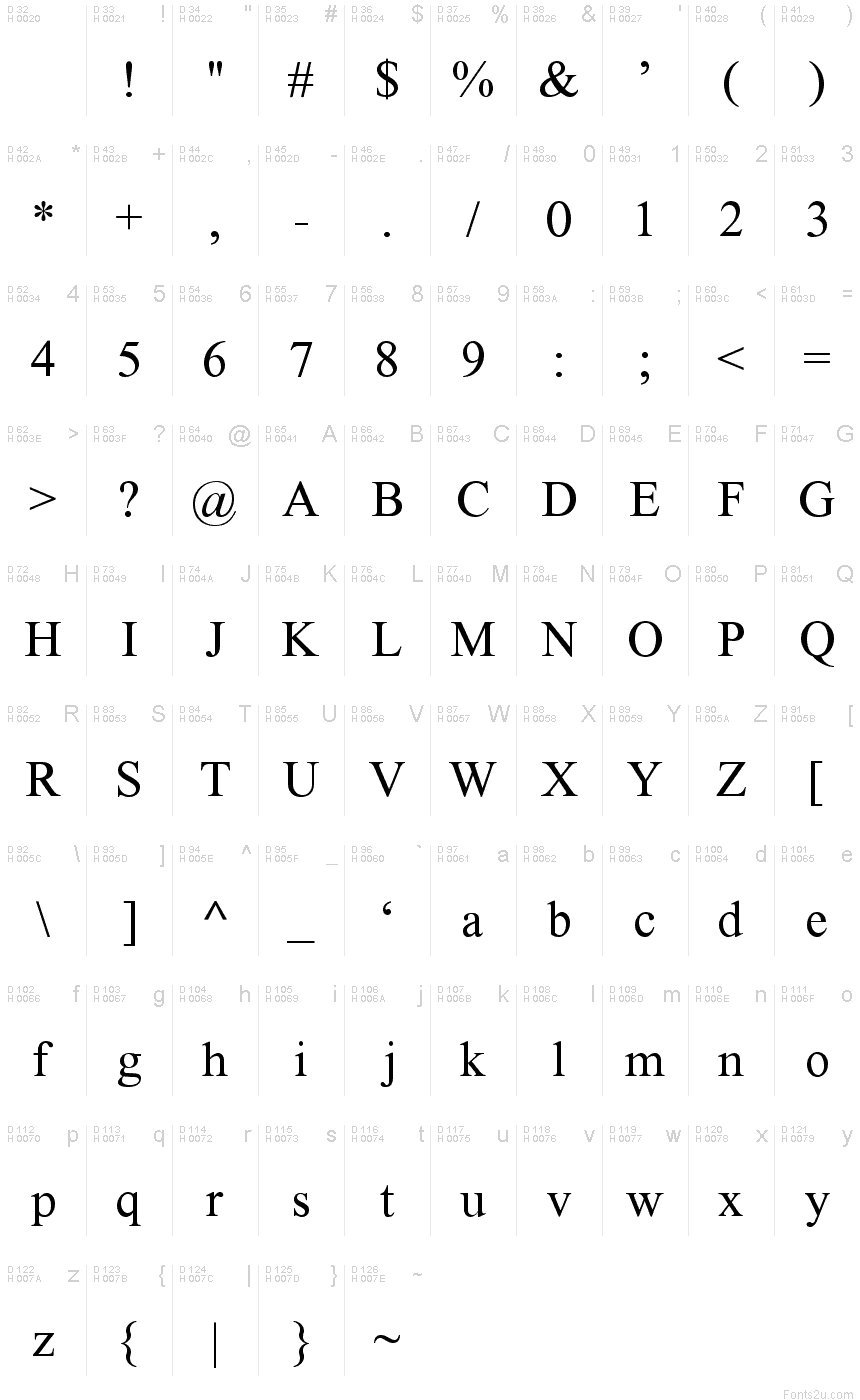FretQwikC
TrueTypeGNU/GPL
- Hаголоси (часткові)
FretQwikC.ttf
Теги
Таблиця символів
Для перегляду різних таблиць символів для цього шрифту, будь ласка, скористайтесь меню, що розкривається.

Основна інформація про шрифт
Про авторські права
Free public license.
Сімейство шрифту
FretQwikC
Підсімейство шрифту
Regular
Унікальний ідентифікатор підсімейства
FretQwikC: 2004
Повна назва шрифту
FretQwikC
Ім´я настільної версії
Version 4.00
Ім´я поскрипт шрифта
FretQwikC
Про виробника
Designed by an amateur: Free, and worth it!
Дизайнер
Robert Allgeyer (Santa Cruz, CA USA)
Опис
Version 4.00 replaced the ASCII (non-fret) characters with an improved set. Version 3.00 added 4-string. Version 2.10 added mini-Roman numerals. Version 2.20 modernized the codepage (a technical detail). Version 2.30 was not publicly released. In version 2.40, the small 0 character has been added at fret level and at nut level; character combo fr. has been added at fret level; and a half-space has been added. Also, some unused code locations have been temporarily filled with spaces, so that the codepage looks like that of other fonts. The current version is drop-in compatible with previous versions. However, older versions may be missing a few characters presently in the font.
Version 2.40 also added FretQwikC, an alternative version of the font, with narrower fretboard. FretQwik and FretQwikC are separate fonts, but (except for shape of fretboard and associated items) are interchangeable.
FretQwik is a special-purpose font for creating guitar fret diagrams as if they were text. The ASCII character range (keyboard characters) are the same as would be found in an ordinary text font. But in the upper code range, FretQwik has symbols that can be pieced together to form most common tablature diagrams. These characters can be selected from a character map utility, preferably one with 16 columns.
How to use it: Using a character map, look for the fret grid symbol (it is at code location decimal 0176). Above the fret grid, at code 0160, is the non-breaking space.
In the column adjacent to the fret grid, there are dots representing finger positions. In the same row as the non-breaking space there is an open circle positioned above the fret grid. Below it is a filled circle at the first finger position, and so on down the column.
Begin with a fret grid. Place a dot for the first string. Move to the next string using the non-breaking space. Place a dot for the second string. Continue. You may omit a dot on any string, but you must use the non-breaking space to move from string to string.
You may also place arcs across the strings. An arc is placed at its leftmost point. Arcs in the same row as the non-breaking space will be positioned above the fret grid. Moving down the rows, arcs move further down the fretboard. The width of arcs varies from the full width of the fretboard (in the column adjacent to the dots), down to merely spanning adjacent strings.
There are also some other symbols useful for spelling the chord name.
This font was derived (modified) by Robert Allgeyer. The ASCII characters are from Pyrus FreeSerif font, provided by the font software manufacturer. Non-ASCII characters are original.
Version 2.40 also added FretQwikC, an alternative version of the font, with narrower fretboard. FretQwik and FretQwikC are separate fonts, but (except for shape of fretboard and associated items) are interchangeable.
FretQwik is a special-purpose font for creating guitar fret diagrams as if they were text. The ASCII character range (keyboard characters) are the same as would be found in an ordinary text font. But in the upper code range, FretQwik has symbols that can be pieced together to form most common tablature diagrams. These characters can be selected from a character map utility, preferably one with 16 columns.
How to use it: Using a character map, look for the fret grid symbol (it is at code location decimal 0176). Above the fret grid, at code 0160, is the non-breaking space.
In the column adjacent to the fret grid, there are dots representing finger positions. In the same row as the non-breaking space there is an open circle positioned above the fret grid. Below it is a filled circle at the first finger position, and so on down the column.
Begin with a fret grid. Place a dot for the first string. Move to the next string using the non-breaking space. Place a dot for the second string. Continue. You may omit a dot on any string, but you must use the non-breaking space to move from string to string.
You may also place arcs across the strings. An arc is placed at its leftmost point. Arcs in the same row as the non-breaking space will be positioned above the fret grid. Moving down the rows, arcs move further down the fretboard. The width of arcs varies from the full width of the fretboard (in the column adjacent to the dots), down to merely spanning adjacent strings.
There are also some other symbols useful for spelling the chord name.
This font was derived (modified) by Robert Allgeyer. The ASCII characters are from Pyrus FreeSerif font, provided by the font software manufacturer. Non-ASCII characters are original.
Ліцензія
Free public license.
This font is offered AS-IS, with NO WARRANTY EXPRESS OR IMPLIED, and no support. User accepts all risk of use.
This font is offered AS-IS, with NO WARRANTY EXPRESS OR IMPLIED, and no support. User accepts all risk of use.
Розширена інформація про шрифт
Платформи підтримуються
ПлатформаКодування
ЮнікодЮникод 2.0 и прогресивна семантика, тільки Юникод BMP
MacintoshЛатинська
MicrosoftТільки BMP юникод
Деталі шрифту
Створено2005-10-05
Перегляд4
Кількість гліфів177
Одиниць на Em1000
Права вбудовуванняBбудовування для стаціонарної установки
Клас групиТрадиційні засічки
НасиченістьСередній (нормальний)
ШиринаСередній (нормальний)
Mac стильЖирні
НапрямокГліфи змішаної спрямованості
ВізерунокPегулярний
ВисотаНе моноширинний